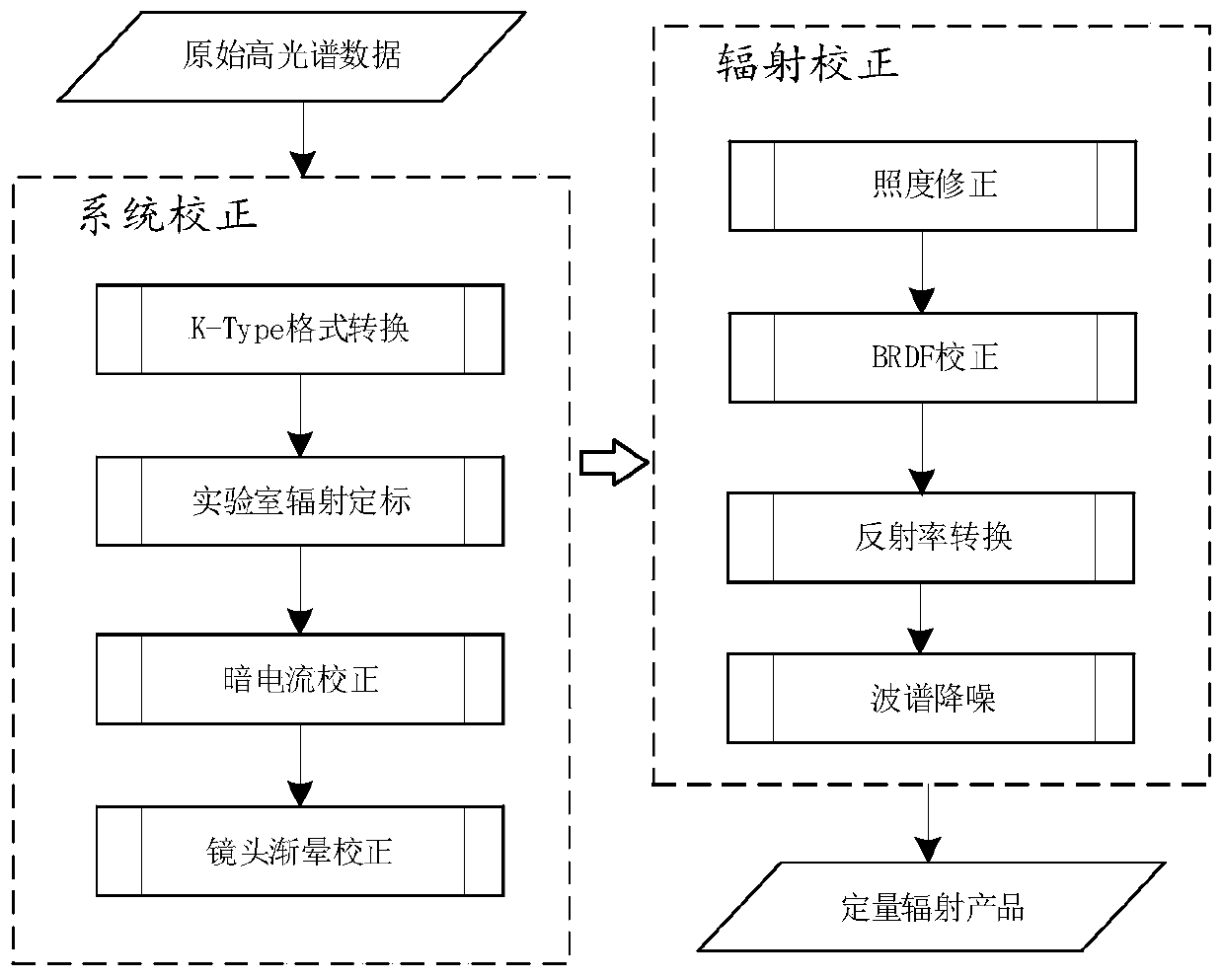Radiation correction method of frame-type FPI hyperspectral image
A hyperspectral image, radiometric correction technology, applied in optical radiometry, spectrometry/spectrophotometry/monochromator, spectrum survey, etc. Non-uniformity and other problems, to achieve the effect of eliminating the difference in radiation brightness gradient, eliminating the effect of lens attenuation, and eliminating the difference in brightness gradient
- Summary
- Abstract
- Description
- Claims
- Application Information
AI Technical Summary
Problems solved by technology
Method used
Image
Examples
Embodiment Construction
[0018] The present invention will be further described below in conjunction with accompanying drawing:
[0019] Such as figure 1 Shown: the radiation correction method of the present embodiment comprises the following steps:
[0020] S1: Hyperspectral data acquisition. Before the flight, first mount the hyperspectral camera on the stabilized gimbal, and fix the camera from the upper and lower sides through the rabbit cage structure to reduce the camera shake during the flight and keep the camera lens vertically downward. Secondly, the Intersil ISL29004 relative irradiance sensor and GPS receiver with a spectral sensitivity range of 400-1000nm are installed on the top of the drone. Finally, four 1.2m×1.2m portable diffuse reflection tarpaulins are laid out on the ground as radiation reference targets. The surface is coated with acrylic dye or silicone resin, which can make the surface evenly scattered. The nominal reflectance is 3%, 22%, and 48% respectively. and 64%. When ...
PUM
 Login to View More
Login to View More Abstract
Description
Claims
Application Information
 Login to View More
Login to View More - R&D
- Intellectual Property
- Life Sciences
- Materials
- Tech Scout
- Unparalleled Data Quality
- Higher Quality Content
- 60% Fewer Hallucinations
Browse by: Latest US Patents, China's latest patents, Technical Efficacy Thesaurus, Application Domain, Technology Topic, Popular Technical Reports.
© 2025 PatSnap. All rights reserved.Legal|Privacy policy|Modern Slavery Act Transparency Statement|Sitemap|About US| Contact US: help@patsnap.com



